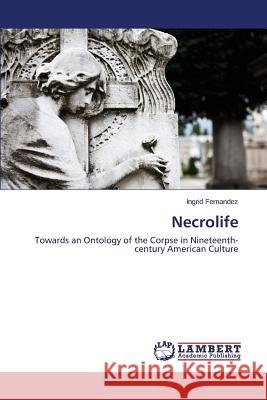Necrolife » książka
Necrolife
ISBN-13: 9783659151897 / Angielski / Miękka / 2014 / 420 str.
The idea of "necrolife" offers a conception of life that differs from conventional medical definitions and emerges from the particular institutions and aesthetic forms that accompanied death in the United States in the nineteenth century. This historical context allows one to rethink the chronology of life and death as an ongoing non-linear processes. This study examines canonical authors such as Mark Twain, Edgar Allan Poe and Ralph Waldo Emerson as well as medical manuals, embalming study guides, funeral photographs, mourning manuals and death-bed scene testimonies within the context of the development of the American funeral industry and mourning practices. The conception of life that emerges from the analysis of these works emphasizes the physicality of the corpse and its vitality as an organic being even as it decomposes. This conception of life opens up alternative practices of dying and mourning that resist the medicalization of death and of corpses that took hold in the later part of the century. Rather than separating the dead from the living, nineteenth-century American culture privileged proximity to the dead, even at the postmortem stage.
The idea of "necrolife" offers a conception of life that differs from conventional medical definitions and emerges from the particular institutions and aesthetic forms that accompanied death in the United States in the nineteenth century. This historical context allows one to rethink the chronology of life and death as an ongoing non-linear processes. This study examines canonical authors such as Mark Twain, Edgar Allan Poe and Ralph Waldo Emerson as well as medical manuals, embalming study guides, funeral photographs, mourning manuals and death-bed scene testimonies within the context of the development of the American funeral industry and mourning practices. The conception of life that emerges from the analysis of these works emphasizes the physicality of the corpse and its vitality as an organic being even as it decomposes. This conception of life opens up alternative practices of dying and mourning that resist the medicalization of death and of corpses that took hold in the later part of the century. Rather than separating the dead from the living, nineteenth-century American culture privileged proximity to the dead, even at the postmortem stage.











